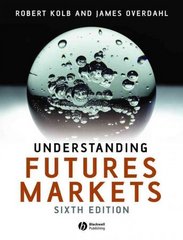
1. Dividend growth under uncertainty. So far, we have assumed that dividends grow predictably at a constant rate g (or at two rates, 91 and 92). This is unrealistic. First, go online and look up annual SP500 index prices (levels) and SP500 dividends (levels) over the last 30 full years (1990 to 2019). Be careful to note whether the series you find are inflation-adjusted or not. Either way is fine, as long as it's consistent. Assume dividends are paid once per year on the last day of the year, 12/31. a. Find arithmetic and geometric means, as well as the standard deviations, of (1) the dividend growth rate and (2) the index return. Produce a frequency histogram of the annual dividend growth rates. Does it look approximately normal? (1 point) b. Using the VaR method, what is the probability of a negative dividend growth rate over one year? (Assume dividend growth rates are approximately normally distributed.) (2 points) c. Using the 2019 year-end index price (P), the 2019 dividend value (D), and the historical arithmetic average index return (E[r] = k), solve for the dividend growth rate g implied by these values, assuming constant perpetual dividend growth. Also calculate the dividend yield, D/P, for each year, and report the arithmetic mean of the series. (2 points) d. Show analytically that with constant perpetual dividend growth, the expected (required) return k over the next year (t = 0 to t= 1) must equal the dividend yield over the next year, D1/P, plus the dividend growth rate g. Explain the intuition behind this result why is this the case? (3 points) e. Warren Buffetts Berkshire Hathaway represents something of a paradox: Buffett famously loves to buy large equity stakes in companies that pay large, consistent cash dividends, but has never once paid a dividend to Berkshire's shareholders, and has made it clear that he never plans to. Do some research online and explain Buffett's reasoning. (3 points) 1. Dividend growth under uncertainty. So far, we have assumed that dividends grow predictably at a constant rate g (or at two rates, 91 and 92). This is unrealistic. First, go online and look up annual SP500 index prices (levels) and SP500 dividends (levels) over the last 30 full years (1990 to 2019). Be careful to note whether the series you find are inflation-adjusted or not. Either way is fine, as long as it's consistent. Assume dividends are paid once per year on the last day of the year, 12/31. a. Find arithmetic and geometric means, as well as the standard deviations, of (1) the dividend growth rate and (2) the index return. Produce a frequency histogram of the annual dividend growth rates. Does it look approximately normal? (1 point) b. Using the VaR method, what is the probability of a negative dividend growth rate over one year? (Assume dividend growth rates are approximately normally distributed.) (2 points) c. Using the 2019 year-end index price (P), the 2019 dividend value (D), and the historical arithmetic average index return (E[r] = k), solve for the dividend growth rate g implied by these values, assuming constant perpetual dividend growth. Also calculate the dividend yield, D/P, for each year, and report the arithmetic mean of the series. (2 points) d. Show analytically that with constant perpetual dividend growth, the expected (required) return k over the next year (t = 0 to t= 1) must equal the dividend yield over the next year, D1/P, plus the dividend growth rate g. Explain the intuition behind this result why is this the case? (3 points) e. Warren Buffetts Berkshire Hathaway represents something of a paradox: Buffett famously loves to buy large equity stakes in companies that pay large, consistent cash dividends, but has never once paid a dividend to Berkshire's shareholders, and has made it clear that he never plans to. Do some research online and explain Buffett's reasoning. (3 points)







